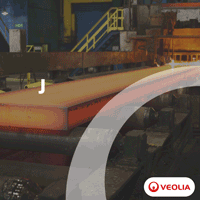Steelmaking Could be Transformed by New Process Developed at MIT
05/09/2013 - A new process developed by MIT researchers could change steel's role as a leading industrial source of greenhouse gases.
Anyone who has seen pictures of the giant, red-hot cauldrons in which steel is made — fed by vast amounts of carbon, and belching flame and smoke — would not be surprised to learn that steelmaking is one of the world’s leading industrial sources of greenhouse gases. But remarkably, a new process developed by MIT researchers could change all that.
The new process even carries a couple of nice side benefits: The resulting steel should be of higher purity, and eventually, once the process is scaled up, cheaper. Donald Sadoway, the John F. Elliott Professor of Materials Chemistry at MIT and senior author of a new paper describing the process, says this could be a significant “win, win, win” proposition.
The paper, co-authored by Antoine Allanore, the Thomas B. King Assistant Professor of Metallurgy at MIT, and former postdoc Lan Yin (now a postdoc at the University of Illinois at Urbana-Champaign), has just been published in the journal Nature…
Click here to continue reading this article from the MIT News Office.



-(220-x-200-px)-(130-x-130-px)-(220-x-200-px).jpg?lang=en-US&ext=.jpg)
.gif?width=200&height=200&mediaprotectionhash=ddb07947ad3b4ab959a83714461eccd5c6895f370695eb035a9ff7aa736f8ad9&ext=.gif)





